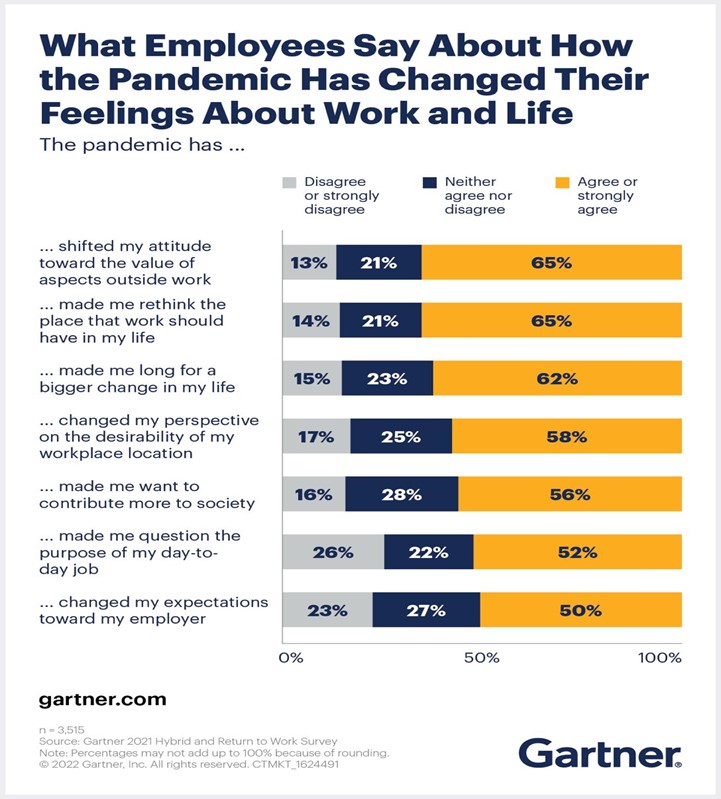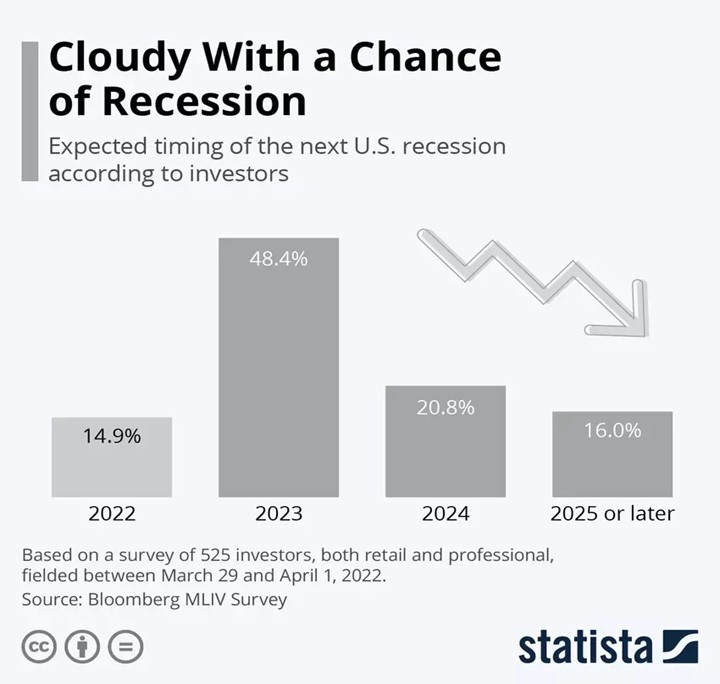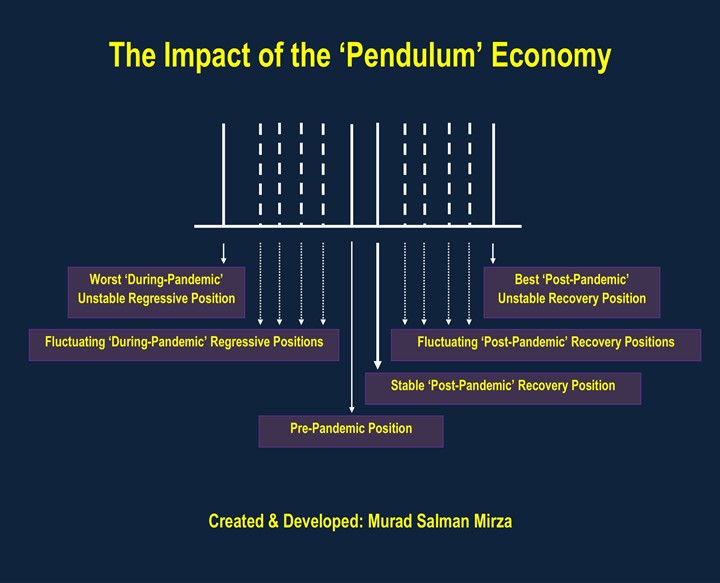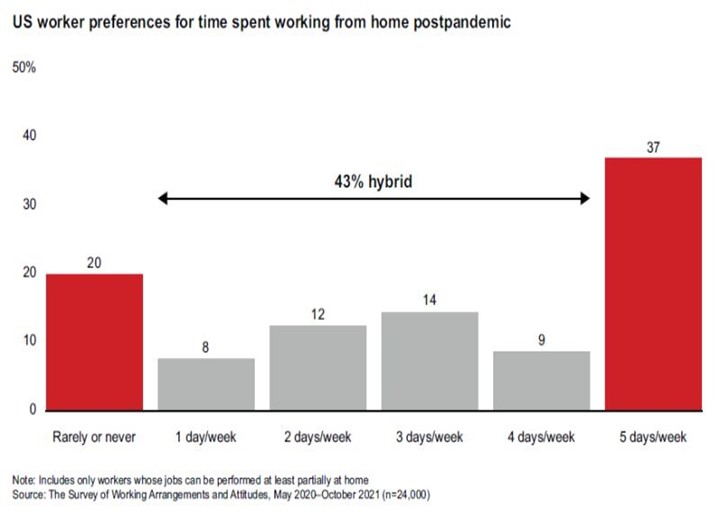(Adjusting and Adapting to the ‘Pendulum’ Economy)
One of the key dilemmas facing businesses in the wake of the COVID-19 Pandemic has been the maintenance of an optimal number of employees who can effectively run the operational aspects without compromising on the quality of their offerings (https://lnkd.in/dPS_Rsw3). This has become a huge challenge, especially, for organizations that took an aggressive approach to rightsizing/furloughing the multigenerational workforces for ‘bandaging’ the profuse bleeding of profits from a significantly reduced customer/client base during the turbulent times of the COVID-19 Pandemic. The psychological blows delivered to the ‘directly impacted’ employees (those who got laid-off or were unceremoniously transitioned into a semi-attached status) and ‘indirectly impacted’ employees (those who weathered the redundancy avalanche but were left to wrestle with the ‘survivor’s guilt’ and/or became increasingly apprehensive about the fragility of their own careers) egregiously damaged the organizational harmony, cultural cohesiveness and psychological contracts. Consequently, it forced many of the ‘survivors’ to take the proactive step of looking for better options elsewhere before their ‘perceived/dreaded’ turn came for redundancies. This also contributed to accelerating the phenomenon of the ‘Great Resignation’ (https://lnkd.in/dU4VndZG.) as multiple options became available for ‘disillusioned/disheartened’ employees to seek more attractive opportunities after economies began to recover from the worst phases of the COVID-19 Pandemic (https://lnkd.in/eAj6zW6m).
On the other hand, a surprise awaited the organizations that began to rehire, after frantically reducing their workforces earlier (https://lnkd.in/guPaV7xJ), due to a positive outlook on business prospects since their former employees and prospective hires moved on to other favorable options (https://lnkd.in/ecqt93je), e.g., engaging in entrepreneurial ventures, transitioning to new careers, joining more conducive workplaces, etc. Additionally, the demands from new and current hires also evolved with ‘hybrid working’ (https://lnkd.in/eS8ymtPD) or ‘remote working’ (https://lnkd.in/e-UPBe7y) becoming an indispensable aspect of a ‘durable’ employment relationship. Such a determination was driven by the internal transformation that took place within such ‘rebellious’ workers as a consequence of gaining the time for self-reflection pertaining to the ‘realization’ of the ‘true’ imperatives in life (https://lnkd.in/eEZSmm8e). The following survey reflects the respective shift in priorities:

This beckons the need to take a closer look at how the economy is ‘recovering’ in the aftermath of the COVID-19 Pandemic since the ‘new normal’ is still stabilizing as reverberations of ‘pandemic-driven organizational fractures’ continue to carry audible echoes throughout the business landscape. Such debilitating ‘tremors’ are the result of added complications emanating from other exacerbating factors, e.g., the war in Ukraine, unrelenting inflationary pressures, persistent supply chain issues, etc., that have been prolonging ‘migraines’ for the organizational leadership. Additionally, alarm bells are going off pertaining to recessionary risks lurking in the biggest economy in the world.

The agonizingly unpredictable current economic situation is akin to a ‘pendulum’ since it is exhibiting alternating phases of slow and fast growth with respect to the pre-pandemic position without settling on a steady trend that can help organizations in streamlining their strategies and operations accordingly. The following chart provides a visual example in terms of the various key stages that have been generally observed/envisioned in organizations across the globe as they grapple with associated constraints:

Let’s review the aforementioned stages to gain further understanding of their ‘elemental role’ within the context of the ‘resonating’ economic environment. This will also provide guidance for devising customized solutions that can facilitate organizations in terms of leveraging their strengths to address shortfalls effectively.
Pre-Pandemic Position
This indicates the strategic orientation and operational status that existed before the onslaught of the COVID-19 Pandemic within various businesses. It reflects the ‘old normal’, for which, the organizations had developed their risk management plans according to the ‘foreseeable’ challenges in the market. It also depicts the presence of ‘stability’ in the size of the workforces (core and peripheral) that were being utilized to run the businesses, with ‘expected’ attrition, under the guidance of the ‘unruffled’ leadership at that time. The strides made in the Digital Age at this point were largely within ‘predictable’ trajectories.
Worst ‘During Pandemic’ Unstable Regressive Position
This indicates the strategic orientation and operational status of the organizations that existed at the most vulnerable time during the ‘overwhelming phase’ of the COVID-19 Pandemic. It reflects the debilitating impact on the ‘perceived’ usefulness of the risk management plans that were developed for ‘normal exigencies’ according to the ‘foreseeable’ challenges in the markets. It also depicts the uncertainty projected in the ‘precarious’ size of the workforces (core and peripheral) that were being frantically ‘shored up’ to keep the businesses afloat under the guidance of a ‘shell-shocked’ and ‘desperate’ leadership.
Best ‘Post Pandemic’ Unstable Recovery Position
This indicates the strategic orientation and operational status of the organizations that exists at the ‘maximum rebound’ position during the ‘recovery phase’ from the COVID-19 Pandemic. It reflects the strong momentum in the markets to ‘recapture’ the ‘lost ground’ of business opportunities and profits from a ‘rapidly’ blossoming customer/client base. It also depicts the penchant for ‘significantly increasing’ the size of the workforces (core and peripheral) to cater for the ‘booming’ business, driven by ‘returning’ customers/clients, under the guidance of a ‘grateful’ leadership.
Fluctuating ‘During Pandemic’ Unstable Regressive Positions
This indicates the strategic orientation and operational status of the organizations during the fluctuating ‘negative growth’ periods while the COVID-19 Pandemic was still raging as a ‘potent’ threat. It reflects the desperate attempts of the organizations to maintain a ‘stable’ footing in ‘shrunk’ markets to ‘weather the storm’ and wait for ‘clearer skies’ on the economic horizon. It also depicts the uncertainty relating to the ‘wavering’ size of the workforces (core and peripheral) that were being ‘held on to’ for keeping the businesses afloat under the guidance of a ‘nervous’ and ‘apprehensive’ leadership.
Fluctuating ‘Post Pandemic’ Unstable Recovery Positions
This indicates the strategic orientation and operational status of the organizations during the fluctuating ‘positive growth’ periods while the COVID-19 Pandemic continues to have a ‘troubling’ presence. It reflects the ‘persistent’ shift towards the ‘new normal’ as a consequence of the inevitable changes in attitudes/behaviors/preferences of ‘wizened’ customers/clients. It also depicts the penchant for ‘steadily increasing’ the size of the workforces (core and peripheral) in congruence with the rising signs of growth in businesses under the guidance of a ‘watchful’ leadership.
Stable ‘Post Pandemic’ Recovery Position
This indicates the strategic orientation and operational status of the organizations at the ‘steady’ position that has been achieved after overcoming the turmoil related to the COVID-19 Pandemic. It reflects the ‘reconstitution’ of the risk management plans in accordance with the ‘lessons learnt’ from the ravages of the COVID-19 Pandemic. It also depicts the imperative of having an ‘optimal’ size of the workforces (core and peripheral) that the organizations are comfortable with in terms of staying relevant and competitive within the ‘revamped’ corporate landscape.
It is important to do a cost/benefit analysis of the composition, type and deployment of workforce that the organizations need to have for maximizing productivity without compromising on the quality of work by effectively leveraging influential factors, e.g., a motivated/galvanized workforce, a suitably skilled workforce, a strongly bonded workforce, a firmly engaged workforce, etc. This includes the induction of early retirees back into the workforce (https://lnkd.in/eyQk4Juf) and the assimilation of AI-driven entities (https://lnkd.in/eUYGvayY) within the workplace to work as colleagues with the ‘human’ workforce (https://lnkd.in/e7jADWqN). The following chart depicts the ‘humanistic’ preferences in the USA:

Full-time office work may be the least preferred option for employees who have discovered/rediscovered the ‘joys’ of working from home as the number of attractive opportunities continues to increase (https://lnkd.in/eCSv3hQ3). However, remote work also comes with constraints of its own in terms of the suitability for certain organizations/professions, .e.g., it has been shown to have limitations with respect to collaboration among information workers in Microsoft (https://lnkd.in/eQY3ayGX).
There is no greater debt on an organization’s conscience than underutilized talent. Workforces should not be put in situations where they are married to the need for doing their jobs, but, divorced from the passion of doing those jobs. Consequently, organizations that can provide the strongest ‘jovial anchors’ (https://lnkd.in/evkNUirQ) for their employees will be the ones to have a healthy pool of bustling talent that are ‘fully onboard’ in terms of realizing/achieving the strategic imperatives for the organization. Are you one of them?








